 |
Overloading Minus Operator, Operators with Date Class, Unary Operators |
| << Operator Overloading, Non-member Operator Functions |
| Assignment Operator, Self Assignmentm, Pointer, Conversions >> |
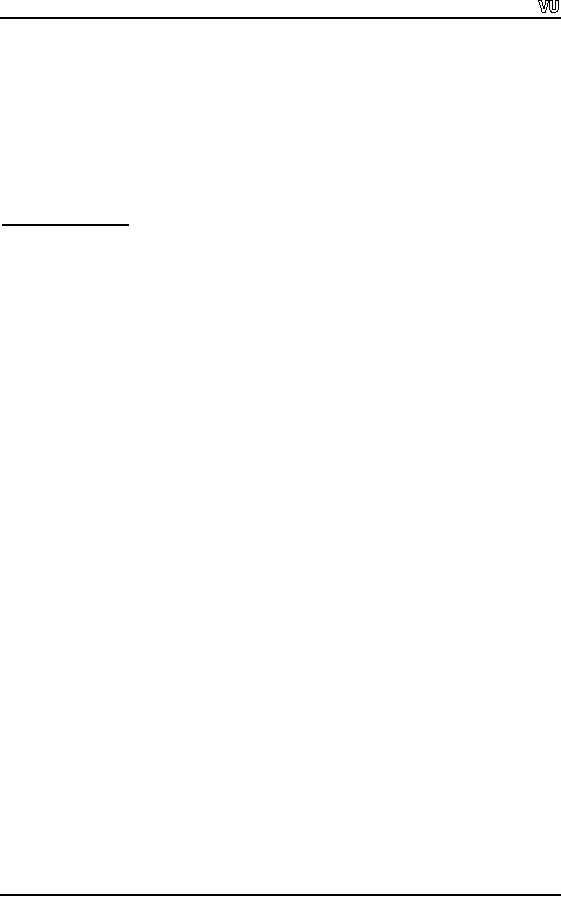
CS201
Introduction to Programming
Lecture
Handout
Introduction
to Programming
Lecture
No. 32
Reading
Material
Deitel
& Deitel - C++ How to
Program
Chapter.
8
8.6,
8.7, 8.12
Summary
18)
Recap
19)
Overloading
Minus Operator
20)
Operators
with Date Class
21)
Unary
Operators
Recap
Before further
discussing the concept of
the `Overloading', we will
recapture the things
dilated
upon in the previous lecture. It is
necessary to know that new
operators i.e. new
symbols
cannot be introduced. Only existing
symbols can be overloaded. Overloading
of
operators
is exactly like writing functions.
However, one should remain
close to the
original
meaning of the operator.
Similarly, it is good not to define
something in opposite
terms
e.g. `plus operator is doing subtraction
or multiplication operator carrying
out
division'.
We can do that but it will
ultimately a bad thing for a
programmer. It makes
our
program practically unreadable
and mis-interpretable. Under operator
overloading
technique,
the binary and unary
operators will remain unchanged
that is we cannot
make
unary
operator work as binary operator or
vice versa. In the previous
lectures, we also
came
across some concepts in
terms of driving force behind
the operator, e.g. in case
of
binary
operator, the driving force is
left hand operand. We have
also studied when to
use
member
operators and non-member operators.
Today we continue discussion on `use
of
operators'.
Overloading
Minus Operator
Let's
define minus operator ( - ) with
special reference to the
complex class. The
process
of
defining the minus operator
is quite similar to that of the plus
operator. Let's first
understand
the action of minus operator. It is a
binary operator, having two
arguments. In
this
case, both the arguments
will be complex numbers. When we
subtract two complex
Page
403
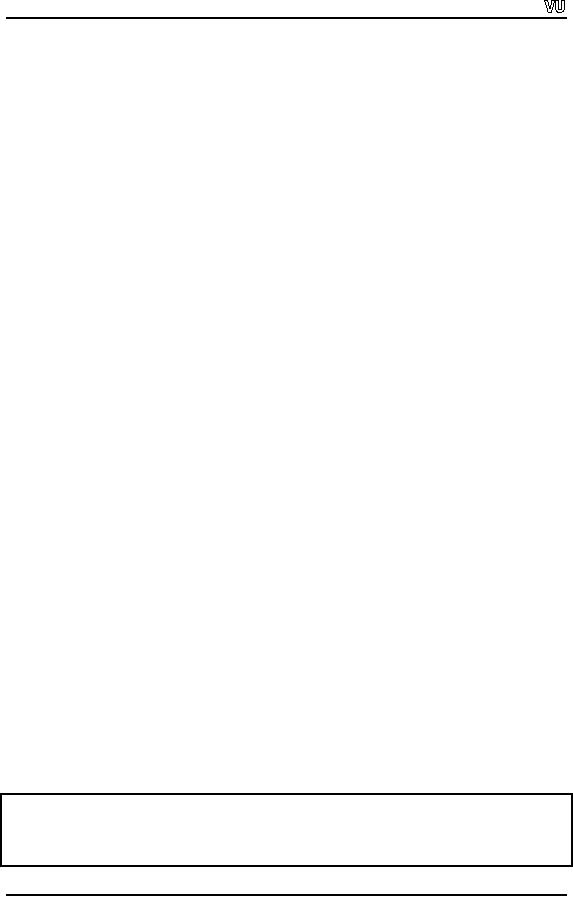
CS201
Introduction to Programming
numbers,
it always return a complex
number. Here the subtraction of
complex numbers is
defined
as, `subtract the real
part from real part
and subtract the imaginary
part from the
imaginary
one". So a member operator will look
like as under:
Complex
operator (Complex c)
As we are
defining it as a member operator, only
one argument will be passed
to it. It is
going to be on
the right hand side of
the minus operator. The
left-hand-side will call
this
as it is
already available to this function. In
the body, we will declare a
temporary
Complex
number. This means that
the real part of this
temporary complex number is
the
difference of
the calling Complex number
and the Complex number
passed as argument
i.e.:
tmp.real =
real c.real;
In the
next line, we calculate the
difference of imaginary part
as:
tmp.imag
= imag c.image;
and
return the tmp Complex
number. By defining, the
minus operator does not
mean that
minus
equal operator has also
been defined. If we want to
overload the minus
equal
operator
(-=), it is necessary to define it.
Let's see how the
defining process is carried
out.
Minus
equal to operator like the
plus equal to operator behaves in
the way that the
value
of
calling party (i.e. the
complex number which is on
the left hand side)
will also be
changed.
So now we will see that
the number itself changing
the value when it takes
part
in the
minus equal to operator.
Again, we will make this a
member function. So only
one
argument
will be passed to it. The
complex number will be on
the right hand side of
the
minus
equal to operator. In the body of
the function, there is no
need of any temporary
complex
number as we are going to change
the number on the left
hand side of the
minus
equal to
operator. We can write it
as:
real -=
c.real;
imag -=
c.image;
Here c
is
the complex number which is
passed as an argument. Now
the minus equal to (-
=)
operator, used in the above
statements, is an ordinary minus equal to
operator for the
integers
defined by the C++. So this is a
classic example of overloading i.e. the
operator
being
overloaded is using the
original or basic operator of
same type. That is the end
of
this
function. The original
number has been changed. We
can return its reference.
It
depends
on its usage.
Here is
the code:
// The
minus operator
definition
Complex
Complex::operator - ( Complex c )
{
Complex
tmp; // defining a temporary
var
Page
404

CS201
Introduction to Programming
tmp.real =
real - c.real;
tmp.imag
= imag - c.imag;
return
tmp;
}
// The -=
operator definition
Complex
Complex::operator -= ( Complex c )
{
real -=
c.real ;
imag -=
c.imag ;
}
Last
time, we discussed the string
class
besides defining the plus
operator as joining
the
two
strings. Can we define minus
for the string
class? Is
the minus operator relevant
to
the
class string? For me
it does not. Unless we come
with some very artificial
definition.
Suppose
we have a string as "This is a test" and
a second string as "test". The
subtraction
of these
two strings means the
deletion of a word or words of second
string from the first
string. It
may make some sense in
this example. What will
happen if the second
string
contains
"My name is xyz". The
subtraction of these strings
does not make any
sense.
The
thing we need to understand at
this point is that every
operator does not make
sense
for
every class. Operators
should be used only when
these make some common
sense so
that
reader can understand it easily. When
you add two strings, it
makes lot of sense.
We
can
use either cat function or
write this plus operator. As
subtraction of strings does
not
make
much sense, so it is not
advisable to define it. Only define
things that are self-
explanatory,
readable and
understandable.
Operators
with Date
Class
We have
so far been using the Date
class.
Let's think what operators
make sense for Date
class.
What will be the meaning of
plus operator or minus operator? Here we
want to
remind
you a key thing i.e. "Paying
attention to detail". Suppose
you have some date
and
want to
add some number to it like
today's date plus 5. Does that
make sense to you? We
will
get a new date by adding
five to today's date i.e.
date after five days.
Similarly, if we
want to
subtract, say 10 from
today's date, we should get
the date of ten days
before.
Here is
the usage of plus and minus
which makes some sense.
Can we subtract two
dates
together
like subtraction of 1st Jan. 2002 from 15th Oct. 2002. What meaning it
will
convey?
Perhaps nothing.
Let's
consider the addition of a
number to a date. Adding an
integer to some date,
according
to the definition we will
get some date in the future.
The Date
object
will be
returned
from this function. We need
a new date after the
addition of integer number.
We
are
defining this as a member-function so
that the Date
object
that is calling it, will
be
passed to
the function. The integer
that is on the right hand
side should be passed as
an
argument.
Therefore in the parenthesis, we
will have the integer.
Now let's discuss it
in
detail.
How can we add an integer to
some date? Let's take
today's date. Write it in
your
copy and
see how can five be
added to it. If you try to
add a number to date, there
are so
Page
405
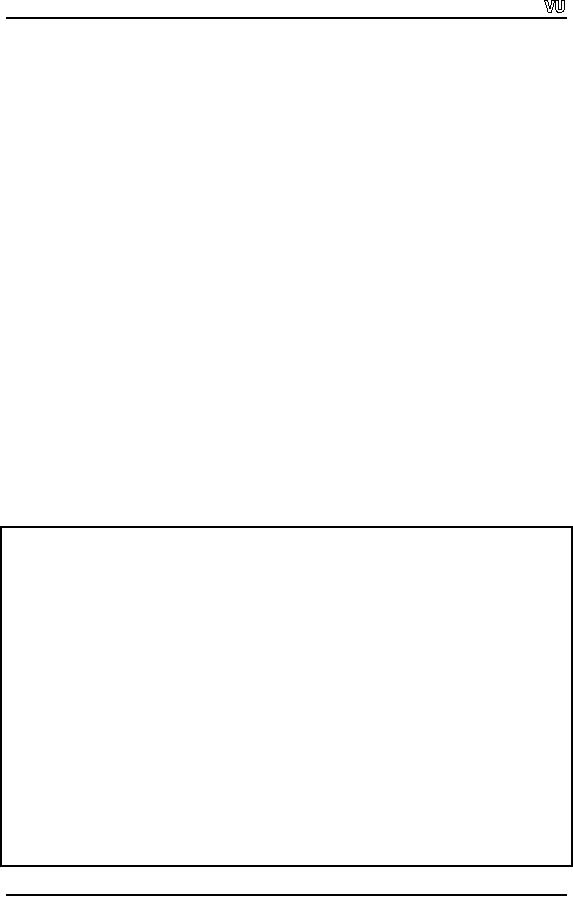
CS201
Introduction to Programming
many
possibilities that can
happen. Suppose, today is
second day of the current
month.
After
adding five to it, we will
get 7th of this month. That
was case I. Let's take the
case
II.
Today is 27th
of any month.
Now what will be the
new date after adding
five. First
thing,
which is very obvious, that
the month will get
changed. But what will be
the date
of this
new month. It depends whether there
are 30 days or 31 days in
this month. It may
be the
month of February. Is it the
leap year or not? If it is
non-leap year, there will be
28
days in
February. Otherwise there will be 29
days. What is a leap year?
There are rules to
determine
whether the year is leap
year or not. If the year is
divisible by four, it will
be
leap
year. Similarly, being a
century year, it may be
divided by 400. Then again
it is a
leap
year. Now we have seen
that there are many
cases when we are adding
five to 27th
of
any
month. Two things happen. The month is
changed and the date
changes according to
the
days in the month. What if it is
the 27th
of the
December? Now you want to
add five
days.
There are 31 days in
December, after adding five
it will be 1st
of next month.
We
may
have declared an array of
twelve months. As December is
the twelfth month, the
last
month of
the year, so we have to go to
first month of the next
year. Here the year has
also
changed.
We will also need to increment 1 to
year too. It seems very
simple that we have
to add an
integer number of days to
some date. It becomes a
complex function. Now
suppose
we have written this complex
function and embedded all
the rules in it. Then
our
life
will become much easier.
Suppose our semester starts
from any date. After
adding the
period of
semester, we will get the
end date of the semester. We
can do date
arithmetic.
This is a
classic example of "paying attention to
detail". To use the class
for general
purposes,
we cannot miss even a single
case. If you want to publish
this class for
others
to use,
you need to pay attention to
detail and make sure that
your class handles all of
the
stuff.
Here is
the complete code of the
program.
File
"Date.h"
// The
Date class is defined
here
class
Date{
private:
int
day;
int
month;
int
year;
int
daysOfMonth(Date d);
//
returns the no of days in a
month
static
const int daysInMonth[]; //
array containing the 12 month's
days
bool
leapYear(int);
// tells
the year is leap year or
not
public:
Date(int
d = 1, int m = 1, int y = 1900); //
constructor with default
arguments
void
setDate(int, int,
int);
// set
the date with
given
arguments
void
display();
//
Display the date on the
screen
//
operators prototypes
Date
operator ++ ();
// pre
increment operator used as
++date1
Date
operator + (int); // Plus operator
used as date1 + 5
Page
406
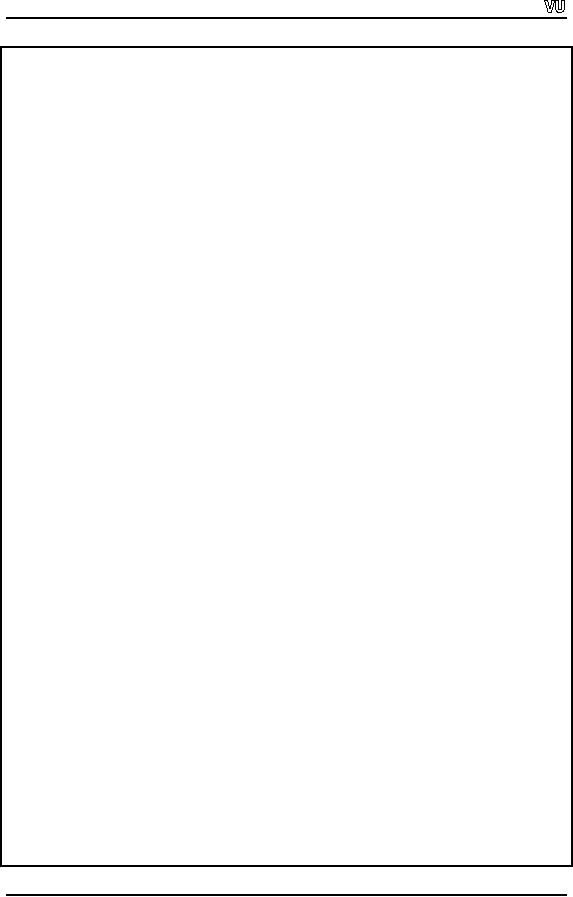
CS201
Introduction to Programming
};
// The
implementation of the date
class.
//
initializing the no of days,
take 0 for month
zero.
const
int Date::daysInMonth[] = {0,
31, 28, 31, 30,
31, 30, 31, 31,
30, 31, 30,
31};
//
Displaying the function on
the screen
void
Date::display()
{
cout
<<"\nDate:" << day <<
"-" << month << "-" <<
year;
}
//constructor of
the date
Date::Date(int d,
int m, int y)
{
setDate(d,
m, y);
}
//
setting the date as given
arguments
void
Date::setDate(int d, int m, int y)
{
year =
y;
// if
month is wrong then set it
to 1
if (month
< 1 && month > 12)
month =
1;
else
month =
m;
// if day
is wrong then set it to
1
if (month
== 2 && leapYear(y))
if (d
>=1 && d <=29)
day =
d;
else
day =
1;
else
if( d
>= 1 && d <= daysInMonth[month])
day =
d;
else
day =
1;
}
// This
function return the number
of days in a month
int
Date::daysOfMonth(Date d)
{
if (d.month == 2
&& leapYear(d.year)) // if leap
year then Feb is 29
return
29;
else
Page
407
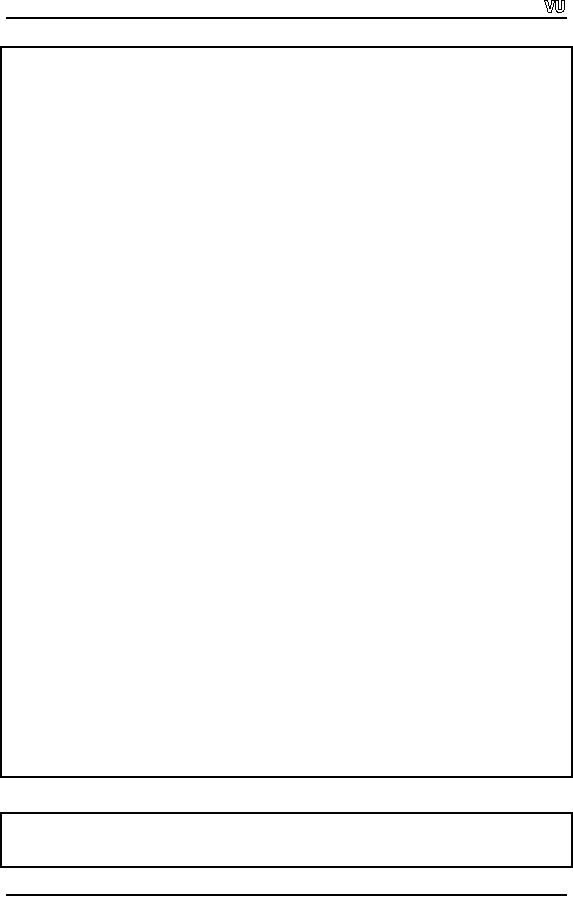
CS201
Introduction to Programming
return
daysInMonth[d.month];
}
// Testing
that the year is leap or
not.
bool
Date::leapYear(int y)
{
if (
(y%400 == 0) || (y%100 != 0 &&
y%4 == 0))
return
true;
else
return
false;
}
// +
operator overloaded for the
date. Used as date1 +
5
Date
Date::operator + (int
numberOfDays)
{
for
(int i = 1; i <= numberOfDays;
i++)
{
++(*this);
// calling the pre increment
operator
}
return
*this;
}
// Pre
increment operator
Date
Date::operator ++ ()
{
if (day
== daysOfMonth(*this) && month == 12) //
end year
{
day =
1;
month =
1;
++year;
}
else
if(day == daysOfMonth(*this)) // end
month
{
day =
1;
++month;
}
else
// not the last day of
the month
{
day++;
}
}
The
main program is:
#include
<iostream.h>
#include
"date.h"
Page
408
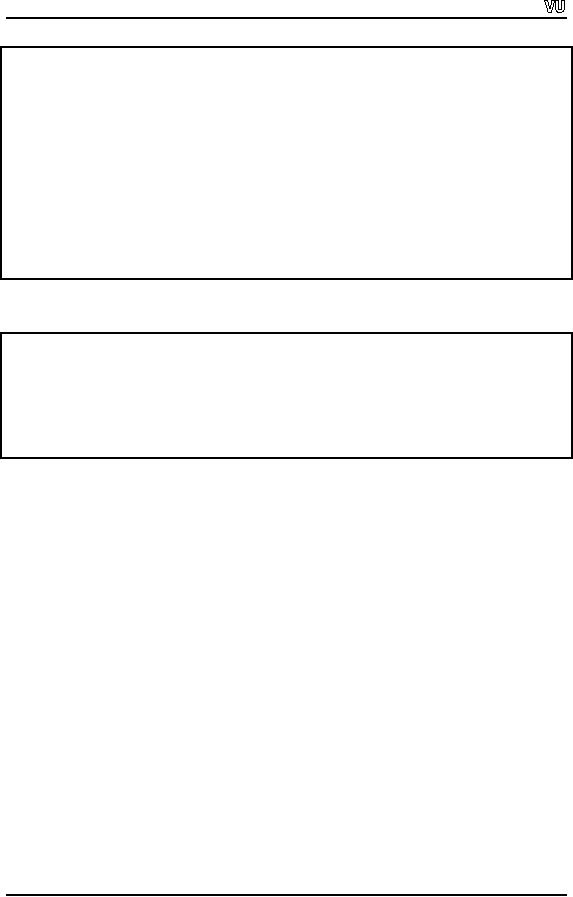
CS201
Introduction to Programming
void
main()
{
Date d1
(26, 12, 2002), d2(28,2
,2000), d3;
d1.display();
++d1;
cout
<< "\nAfter adding 1 day,
the date is ";
d1.display();
cout
<< endl;
d2.display();
d2 = d2 +
5;
cout
<< "\nAfter adding 5 days to
the above date";
d2.display();
}
Output of
the program:
Date:26-12-2002
After
adding 1 day, the date
is
Date:27-12-2002
Date:28-2-2000
After
adding 5 days to the above
date
Date:4-3-2000
Similarly
we may have a counter-function that
subtracts some number from
the date. This
is the
same but of reverse nature.
Suppose it is Jan 3rd and
we have to subtract ten
days
from
it. The month will be
changed to December while
the year is going to be
decremented
by 1. To determine the date of
December, we need to know
the number of
days in
December and count
backwards. Now we don't need
the number of days of
current
month. Rather the number of
days in previous month is
important. Suppose it is
3rd of March and subtract
seven from it. What
will be the date? Now
you have to do
complex
arithmetic and take care of
all the cases. It is very
complicated but having only
one
time effort. Date arithmetic
is very important and common
in business applications.
If
someone applies for
vacations, you just have to
enter that this person is
going on leave
from
this date for ten
days and you will
know his date of re-joining
the duty. If someone
works on
daily wages and paid after a
week. Someday, he comes and
says that he is
going on
vacations. We need to calculate
the number of days from
the day of last
payment
to to-date. It is simple date
arithmetic. Writing a Date
class
with these
appropriate
operators overloaded will be
very useful exercise. It adds to
your overall
programming
vocabulary.
There
are two kinds of programming
vocabulary. One is the keywords of
C/C++ etc
while
the second is higher-level vocabulary.
What sort of vocabulary we have in
our tool-
box. In
the first part of this
course, we have learned how
to write loops, nested loops
etc.
We learn
to handle matrices and vectors
using those rudimentary rules.
Now if you think
about
that we have written a
matrix class and a member
function inverseOfMatrix().
We
Page
409
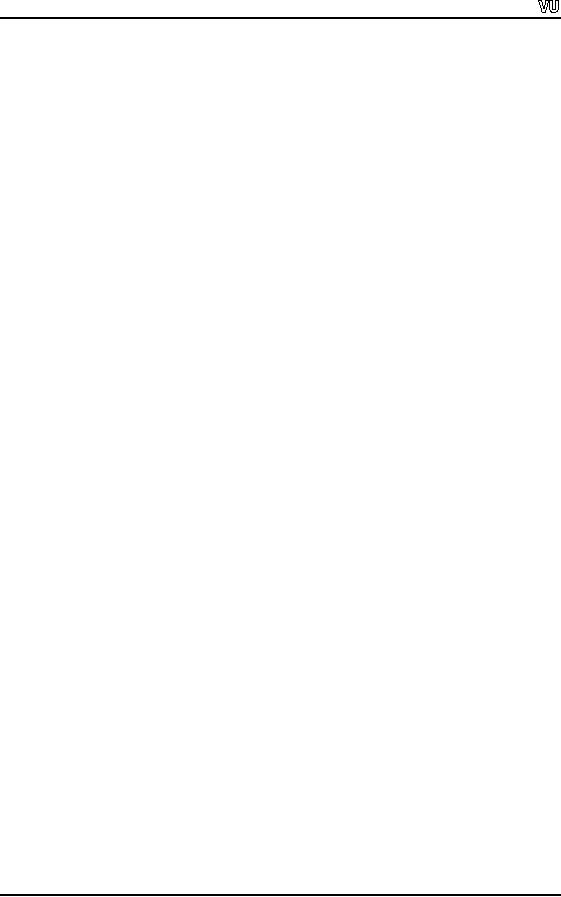
CS201
Introduction to Programming
can
use this function again
and again. Similarly in the
Date
class, we
can put in some
rudimentary
calculations on date arithmetic. Add or
subtract number of days from
some
date.
These are very useful functions. In
the daily wages example, you
need to subtract a
date
from a date. Now we need to
overload the minus operator
again with date
minus
date.
First we overload the minus
operator with date minus
some integer number.
There
may be
two versions of minus
operator. Here, you have to
work in detail. Subtracting a
date
from another date is
relatively non-trivial. As a programming
idea, you can
think
that
subtracting two dates
involves huge calculations. Can we
perform some logical
tests
here? If
we want to implement date1
date2 while
date1
is
smaller than date2. The
first
question
is do we want to return a negative
number. Let's say we want
this, then date1
date2
can
return a negative number. So it
can return a negative number
or zero (if the
dates
are identical) or positive
number (the number of days).
How we can implement
this
functionality?
One way to do it is with the
help of calendar. Under this
method, we will
start a
loop till the other
date is got. Then by reading
the loop counter, we can
tell the
difference in
days. It is a good idea. But
for that, we need a calendar
somewhere. If the
dates
are in different years, we
will have to ensure the
availability of calendar of
next
year.
Think about it and try to
write this function.
Now
what about the plus-operator
for two dates? Minus
operator for strings did
not make
a lot of
sense. Similarly, the plus
operator for two dates
does not make much sense.
We
can
add some number to date.
But how can we add a
date to some other date.
There is no
logical
and straight forward answer to this. So
we don't define such a function.
The
meaning
of our operator should be obvious.
You can write whatever you
want in the
function.
But it is bad idea. The
idea of this exercise is to
pay attention to detail. Think of
all
the various things that can
happen. Tabulate them, determine
the logic and then
start
programming.
Don't start typing your
program before your brain has
come up to the
same
point. First analyze the problem,
understand it, look at all
the cases, draw a
flow
chart,
write pseudo code. Once
you are comfortable with
this and know what
you want to
do then
start writing your program.
The time spending on
analyses is arguably the
best
usage of
your time as a programmer. The
time you spend on debugging
and removing
errors
from faulty code is huge.
Spending time on good design
pays off. You
should
debug
for syntax errors like a semi-colon is
missing somewhere. You
should not face
any
logical
error at debugging stage
because logic errors are
very hard to track. You may
just
not
worry about the design
and start writing code.
The program may work for
two or
three
cases. You may declare
that you have written
the program. When other
starts using
it on
some other case which
you did not cater,
the program does not
work or produces
some
strange results. There is no syntax
error in the program. The
compiler compiles it
successfully
and makes an executable
file. Now we have to check
the logic.
Determining
the
logic from the code is a
million times more difficult
than determining code
from
logic. In
this case, analysis will be
always followed by design
and then code. Please
keep
this in
mind.
Unary
Operators
Let's
talk about unary operators.
Unary operators take one
argument like i++
or
i--(Post
Increment or
post decrement operators for
integers) or ++i, --i (Pre
increment or pre
Page
410
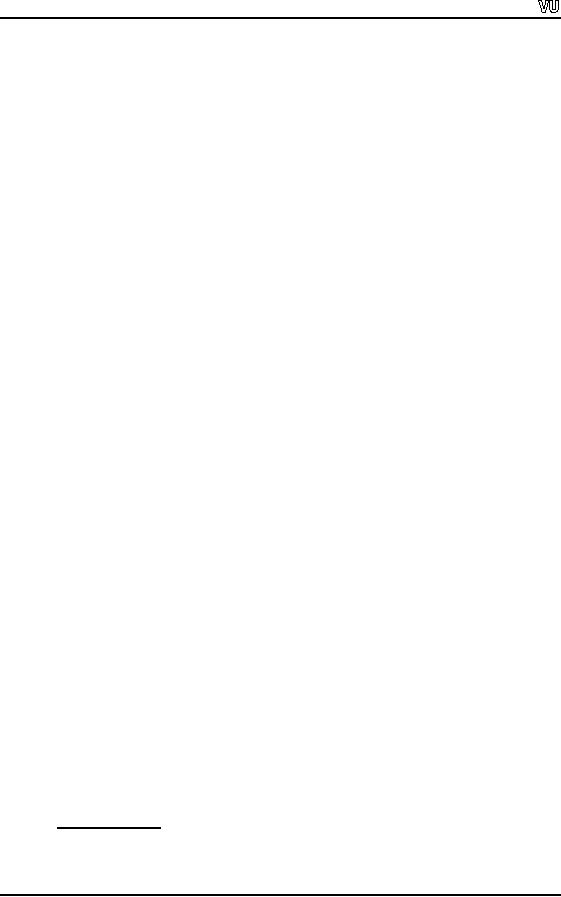
CS201
Introduction to Programming
decrement
operator). You can't make
unary operator as binary operator or
binary
operator
as unary. Let's overload
unary operator in the Date
class. We
want to overload
++.
This operator should add a
day in the current date.
When we say ++date1
or
date1++, it
should get tomorrow's date.
This is same as date1
+=1 or date1 = date1 + 1.
We simply
have to change to tomorrow's
date. If this is the member
function, it will get
the
date object automatically. The internal
structure of the object is available to
the
function
so that it takes no argument. It
will return a Date
object.
Its prototype will be
as:
Date
operator ++ ( ); // pre increment
operator
What
will be in the function
definition? You have to pay
attention to details.
The
argument
that we used in the plus
operator, is also applicable here.
What will be the
next
date
when we add 1 to the current
date. Let's work it out. If
it is not the last date of
the
month,
then simply add one to
the day. If the date is
the last day of the month,
then
change
the month and date to
1st. If the date is
the last date of the
year, then increment
the
year
too. Suppose we have some
function available which returns
the days of month
given the
month number. So if we say
daysOfMonth(6)
it
should return 30. The
function
is
intelligent enough that when
we say daysOfMonth(2)
it
should return 28 if the year
is
not
leap year. Otherwise, it will be
29. Therefore we have to
send it year too along
with
the
month number. We can also
pass it the complete Date
structure
as
daysOfMonth(date1);
We
will use this function in
writing the ++ operator. In a
way, the
logic is
same as we used in the plus
operator. Suppose the object
d
is
calling this ++
operator
as d++
where
d
is an
object of type Date.
Therefore the day, month
and year
data
members will be available to this
function. In the body of the
function, first of all
we
will
check whether this is the
last date of the month
as:
if (day
== daysOfMonth ( *this ) )
{
// this
is the last day of the
month
//
process accordingly
}
In the
above condition, we have
checked that day is equal to
the number of days in
the
month or
not. If the condition
returns true it means that
this is the last day of
the month.
Here we
have used this
to
pass the object (current object) to
the function daysOfMonth.
`this'
pointer is
implicitly available to every member
function and this
pointer points
to
the
current object. As per requirement of
the program, we have written
d++
where
d
is
the
object of type Date.
We
are not using the object
d
in
the program. This object is
itself
available.
Now
the data of object d
is
available in the function as day,
month or year. The object d
is itself
present either from its
member data (day, month, year) or
through the `this
pointer'
which points to the current object. We
can also expand the
definition of the
function
daysOfMonth( )
as
daysOfMonth(int
day, int month, int
year). If the
given day is
the
last day of the month, we
will increment the month. Before doing this, we
need to
Page
411
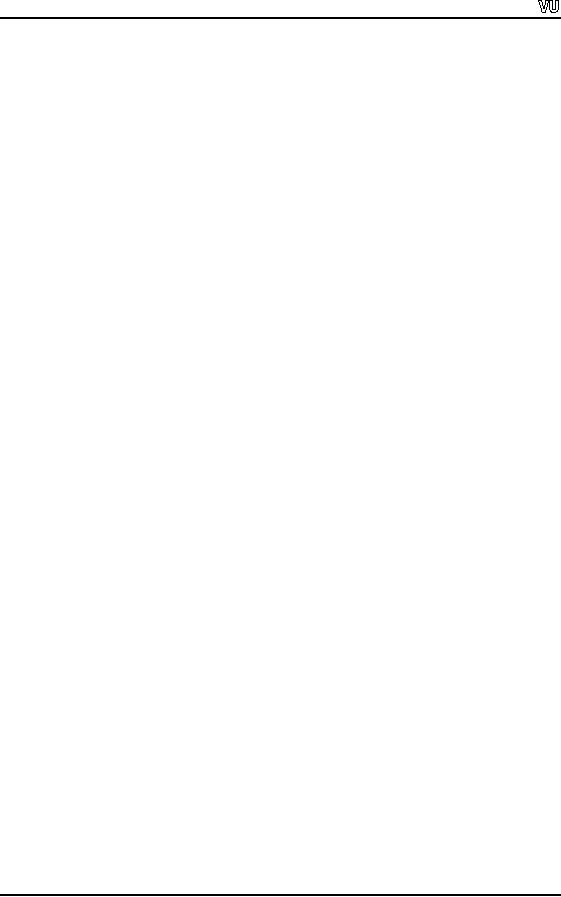
CS201
Introduction to Programming
check
whether this is the last
month or not. Therefore we
have to introduce another
nested
`if' condition. The code
segment will now be
as:
if (day
== daysOfMonth ( this ) )
{
// this
is the last day of the
month
if (month
< 12)
{
day =
1;
month++;
}
else //
this is the last month i.e.
December
{
day =
1;
month =
1;
year++;
}
}
else
// not
the last day of the
month
{
day++;
}
The ++
operator simply adds one to
the date of the calling
object. We define it as member
function.
Therefore, no argument is needed. We
can make it non-member but
have to
pass it a
Date
object.
To distinguish
the pre increment operator
with post increment operator, an
int argument
is passed
to it. The prototype of post increment
operator for Date
is:
Date
operator ++ (int ); // post increment
operator
Here we
don't need to use this
int argument. The
implementation is same as
pre
increment
operator as in both cases we
want to add 1 to the
date.
Can we
implement the plus operator
using this function? We can
write the plus
operator
in some
new fashion. We pass it a positive
integer number, which has to
be added to the
date. We
can write a loop in the plus
operator. The loop condition
will be as i <
number
where number
is
the argument passed to it.
So in the program if we have
written as
date1+5;
the
loop will run for
five times and in the body
of the loop we have ++date1.
Suddenly
our complicated logic has
been boiled down to simple
as incremented by 1.
This is
the classic example of code
reuse.
We don't
know who is going to use
this code. Nobody is
perfect. But we should
think
before
writing the program about
the structure, interface,
the setters and getters
and the
operators
to be overloaded. The thumb rule is if
the meaning of + and ++
operator is
Page
412
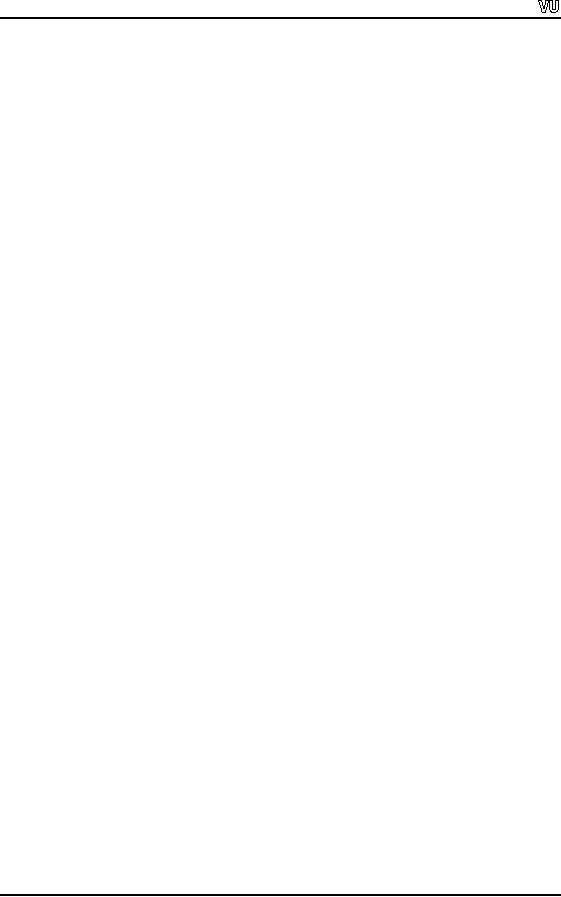
CS201
Introduction to Programming
same as
in ordinary arithmetic, then + operator
can be used in the ++
operator. Keep in
mind
that we can call a function
from another function. This
is a good example of code
reuse. We
can call the + operator as
many times as needed. The daysOfMonth
is
a
member
function and it is used in ++
operator function. `+ operator' is a
member
function,
used in ++ operator. We are
building a hierarchy. Suppose there is
some small
logical
error in the code and
the daysOfMonth
is
not returning the correct
value. This will
effect
the + operator as well as ++
operator. When we remove that
error, then + and ++
operator
both will be corrected.
Moral of the story is that
whenever we write some
code,
it is
better to see whether we are
rewriting some code in the
same class. If we are
calculating
the number of months at two
places or determining the leap
year at two
places,
then try to combine this in
such a way that things
should be calculated at
one
place.
That piece of code may
become some utility
function. This will not be
called from
outside
the class so we will put
this function in the private area.
But the member
functions
can call it. We will
make the daysOfMonth()
as a
private member function of
the
class. It will return the
days of the month having checked whether
this is leap year or
not.
Using this utility function,
we have written + and ++
operator function. Don't
repeat
code
inside a class. Make it a general rule.
Make a function for the
repeated code and
call
it where
needed. For efficiency and
speed, we can repeat the
code. For this, we start
using
macros.
It means that if you put all
your logic in a single place
and then reuse it.
You will
get
lot of safety and security
with this. A correction at one place
will make the
behavior
of the
whole class correct.
Let's
see another interesting function of
the Date
class.
Sometimes, we need to compare
two
dates i.e. whether a date is greater or
less than the other
date. In other words,
the
comparison
operator is applied. Comparison operators <, >,
<=, >=, == can also
be
overloaded.
How do we determine whether date1
is
greater than date2? First of
all, what
will be
its return type. Return
type has to be either true
or false. It says date1
is
greater
than
date2
or
date1
is
not greater than date2. Let's
introduce another keyword bool. It is
a
new
data type. It is very
simple, it only takes two
values true or false. So,
the return type
of
greater than operator (>)
is bool. The
prototype of this member function is
as:
bool
operator > (Date d);
The
argument d
is
the Date
object
that is on the right side of
the greater than sign.
The
left
hand side Date
object is available to
this as this is the member
operator of the
class.
Before
writing the code, think
abut the logic. We have to
determine that the calling
date
is
greater than the date
d
or
not. If the year of current
date is greater than date d,
will the
current
date greater than date
d?
Certainly, it will be so. If
the year is greater,
obviously
date is
greater. If the years of
both the dates are
equal, then we have to check
whether the
month of
the current date is greater
than date d
or
not. If the month of the
current date is
greater
than the date d, current
date is greater. If the months
are also equal, we
will
compare
the days. It's a very
simple hierarchical logic. To be able to
write this logic
cleanly,
you should write case by
case on paper. Analyze it thoroughly.
The logic can be
written
in reverse too. If the year
of the date d
is
greater than the current
date, return false
and so
on. So we can go either
true, true, true or false,
false, false logic. You
will find the
false
logic quicker. We can use
if, `else if' structures.
Return type of this function
is
Page
413
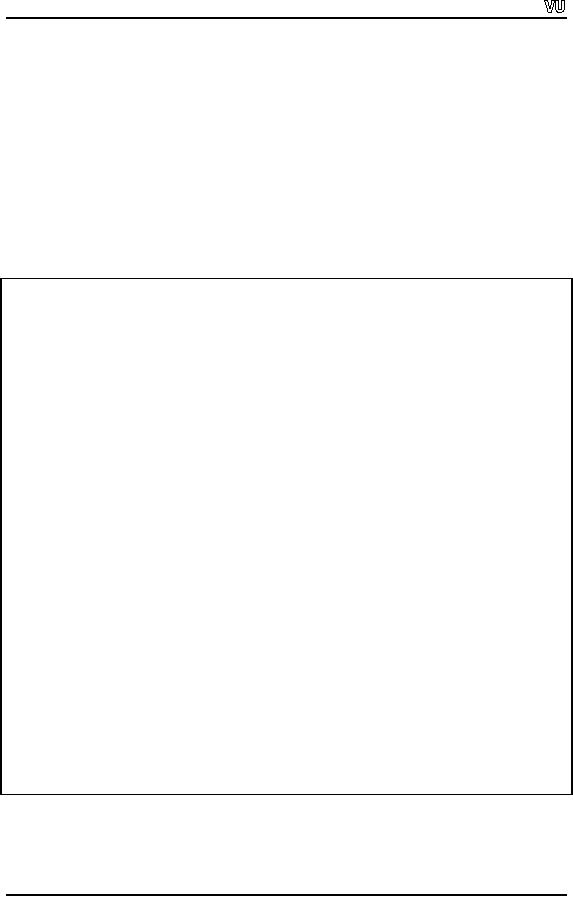
CS201
Introduction to Programming
`boolean'.
Suppose that in our calling
function we have two Date
objects
as d1
and
d2.
We will
write as if(d1
> d2). Why
should we write this? As our
operator is returning true
or false
and `if' also needs
true or false, we can write
very clean and neat
code. This
greater
than operator is a member operator of
Date
class. In
this case, we have the
return
type as
boolean and not returning
the Date
object. Is it
the violation of any rule?
The
answer is
no. The return type can be
anything. It needs not to be the
same as the class. It
can be
anything. The same applies to difference
between two dates. The
difference
between
two dates will be an
integer. It is still a member function.
It simply tells us
the
number of
days between two days. It
could be negative or positive but it is
an integer.
There is
no such rule that the member
operators should return the
object of the same
class.
The
code of the greater than
operator is as follows:
//
Definition of the greater
than operator
bool
Date :: operator > ( Date d
)
{
if ( year
> d.year ) // if year is greater
date is greater
{
return
true;
}
else if (
year == d.year) //if
years are equal check
month
{
if (
month > d.month ) // if month is greater
date is greater
{
return
true;
}
else if (
month == d.month) // if months are equal
check dates
{
if(day
> d.day)
return
true;
else
// otherwise
return false
return
false;
}
else
return
false;
}
else
{
return
false;
}
}
Now
you can write all
the comparison operator of the
Date
class.
The comparison
operators
are greater than, greater
than or equal to, equal to,
less than, less than or
equal
to. If
you are writing one,
you might want to write
all of them. Now we have
expanded
Page
414
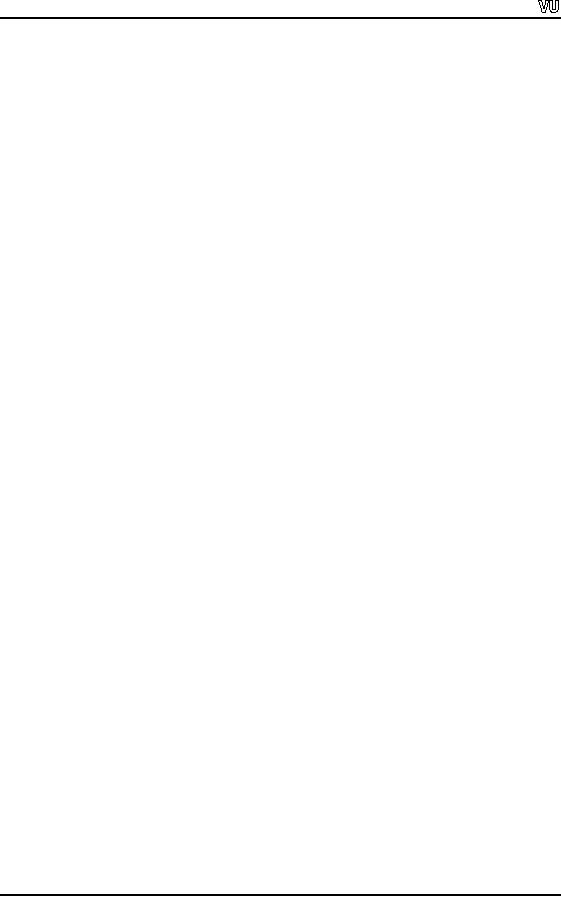
CS201
Introduction to Programming
the
Date
class
enough. As an exercise, write
your own Date
class.
Keep in mind the
principles.
What should be in the Date
class?
How should we set its
values? How many
constructors
we need? Do we need a destructor or
default destructor is enough. After
this,
define
its public interface that is
the member functions that are
visible from outside.
What
operators
should be overloaded?
In the
program, if we say date1
+ 5, we know
that we will get a date
which is five days
later.
What will happen if we write
5 +
date1? The
situation like this may happen.
You
have
published your Date
class
and someone wants to use it in
this fashion. Here we have
an
integer, the plus operator
and a Date
object. It
should return an object of type Date.
To
make
this work properly, we need to
have another operator. You
will have to look at
the
set of
operators needed for this
class. List them out and
write down their behavior.
Be
very
clear what you expect them
to do and start writing the
class. How can we
implement
integer +
date? On the
left hand side, we have an
integer. If the integer is at
the left side,
it can't
be a member function. Member function is
always called by object. Here object is
not
calling the function. Rather
integer is calling. So it has to be a
friend function that
is
sitting
outside. It will get two
arguments, integer and Date. As this
is the friend
function,
the
internal structure of the Date
will be
available to it. You will
create a new Date
object
based on
the given Date
object
and the integer and
return it. We have seen
that member
functions
are returning integers or Boolean. Here, a non-member
function is returning an
object of
Date
class.
When we have listed out comprehensively
that what will be
the
interface
of our class. Which functions
and operators will be
visible from outside?
When
we have
written the behavior of our
class on paper, it is good to
start writing the
code.
You
may have to write a lot of
code for this class.
Once we have compiled the
code and
have
object file, then anyone can
use Date
object.
There will be no problem. We
will
include
the "date.h" file in the
program and use and manipulate
the Date
objects.
We can
use
its operators, member functions etc
very easily. The effort we
put in writing this
code
does
not go waste. It will provide a
lot of ease in the main
program. The biggest
advantage
is the encapsulation that
has happened. All of the
logic that was needed
to
manipulate
the object of class Date
is
now encapsulated in that
class. In case of any
problem in
the behavior of the class,
we will need to correct the
class, compile it. In
the
conventional
function programming or structured
programming, this logic has
been split
at
different locations of the program. It
was everywhere. Different things have
been
embedded
at different points. In the function
oriented programming, we have written a
lot
of functions at
different locations. Here we have a new
data type as Date. All the
date
related
functions are at one place. We
are encapsulating all the
functionalities in the Date
class
that is another reason for
doing all of the homework,
all the thinking before
we
write
the code. No one can
determine all the usage of
the Date
class. If
you start
determining
all the usage of Date
class
and writing the definition
of the Date
class
for the
last
six months, this will be
impractical. You would want
to keep it within limits but
do
the
homework then you write
it. Now you can
reuse it as many times as you
want.
We need a
friend operator when the
driving thing is not the
object of the class like integer
+
date. The
operator is derived by integer. Here, we
use a friend function. There
are
Page
415
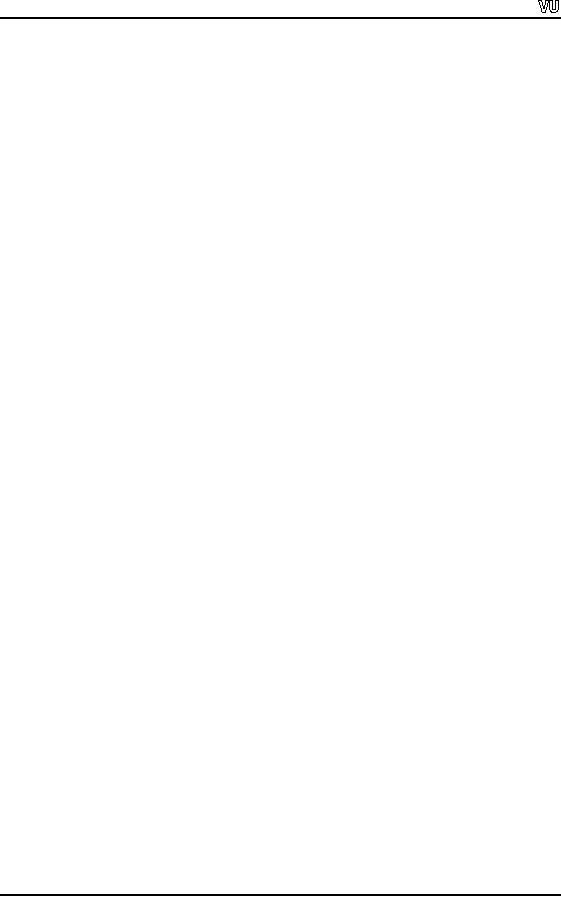
CS201
Introduction to Programming
instances
where friend operators are
used to manipulate two different
classes. A classic
example in
the mathematics is of the multiplication
of vector and matrix. If we have
to
multiply
a vector with a matrix, the
multiplication operator will be
friend of both the
classes.
It will get both vector and
matrix as arguments and manipulate them.
Keep in
mind
that friend operators in a
way can also be used to
glue two classes.
The
disadvantage
of clubbing them together is that
they become interlinked.
Write your own
overloaded
operators and see how
they work.
Page
416
Table of Contents:
- What is programming
- System Software, Application Software, C language
- C language: Variables, Data Types, Arithmetic Operators, Precedence of Operators
- C++: Examples of Expressions, Use of Operators
- Flow Charting, if/else structure, Logical Operators
- Repetition Structure (Loop), Overflow Condition, Infinite Loop, Properties of While loop, Flow Chart
- Do-While Statement, for Statement, Increment/decrement Operators
- Switch Statement, Break Statement, Continue Statement, Rules for structured Programming/Flow Charting
- Functions in C: Structure of a Function, Declaration and Definition of a Function
- Header Files, Scope of Identifiers, Functions, Call by Value, Call by Reference
- Arrays: Initialization of Arrays, Copying Arrays, Linear Search
- Character Arrays: Arrays Comparisonm, Sorting Arrays Searching arrays, Functions arrays, Multidimensional Arrays
- Array Manipulation, Real World Problem and Design Recipe
- Pointers: Declaration of Pointers, Bubble Sort Example, Pointers and Call By Reference
- Introduction, Relationship between Pointers and Arrays, Pointer Expressions and Arithmetic, Pointers Comparison, Pointer, String and Arrays
- Multi-dimensional Arrays, Pointers to Pointers, Command-line Arguments
- String Handling, String Manipulation Functions, Character Handling Functions, String Conversion Functions
- Files: Text File Handling, Output File Handling
- Sequential Access Files, Random Access Files, Setting the Position in a File, seekg() and tellg() Functions
- Structures, Declaration of a Structure, Initializing Structures, Functions and structures, Arrays of structures, sizeof operator
- Bit Manipulation Operators, AND Operator, OR Operator, Exclusive OR Operator, NOT Operator Bit Flags Masking Unsigned Integers
- Bitwise Manipulation and Assignment Operator, Programming Constructs
- Pre-processor, include directive, define directive, Other Preprocessor Directives, Macros
- Dynamic Memory Allocation, calloc, malloc, realloc Function, Dangling Pointers
- History of C/C++, Structured Programming, Default Function Arguments
- Classes and Objects, Structure of a class, Constructor
- Classes And Objects, Types of Constructors, Utility Functions, Destructors
- Memory Allocation in C++, Operator and Classes, Structures, Function in C++,
- Declaration of Friend Functions, Friend Classes
- Difference Between References and Pointers, Dangling References
- Operator Overloading, Non-member Operator Functions
- Overloading Minus Operator, Operators with Date Class, Unary Operators
- Assignment Operator, Self Assignmentm, Pointer, Conversions
- Dynamic Arrays of Objects, Overloading new and delete Operators
- Source and Destination of streams, Formatted Input and Output, Buffered Input/Output
- Stream Manipulations, Manipulators, Non Parameterized Manipulators, Formatting Manipulation
- Overloading Insertion and Extraction Operators
- User Defined Manipulator, Static keyword, Static Objects
- Pointers, References, Call by Value, Call by Reference, Dynamic Memory Allocation
- Advantages of Objects as Class Members, Structures as Class Members
- Overloading Template Functions, Template Functions and Objects
- Class Templates and Nontype Parameters, Templates and Static Members
- Matrices, Design Recipe, Problem Analysis, Design Issues and Class Interface
- Matrix Constructor, Matrix Class, Utility Functions of Matrix, Input, Transpose Function
- Operator Functions: Assignment, Addition, Plus-equal, Overloaded Plus, Minus, Multiplication, Insertion and Extraction